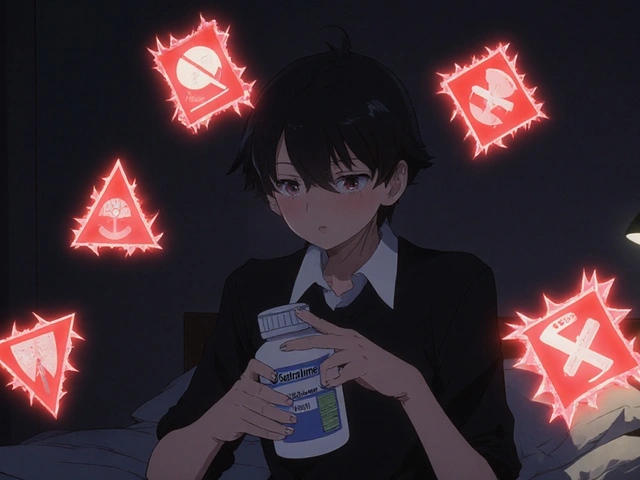Picture this: It’s spring, and you wake each morning to a chorus of sneezing from every room in your house. Whether it’s the kids or you, allergies have you in their grip. You wander the cold-and-flu aisle at your local pharmacy, lost among names like loratadine, cetirizine, and fexofenadine. Next door, your friend is waving a prescription slip for something you’ve never heard of and mumbling about insurance costs. What’s best for your nose and your wallet: the stuff behind the pharmacy counter, or the easy-grab boxes lined up at eye level?
Understanding Your Choices: Prescription vs OTC Allergy Medications
Allergy meds fall into two main camps: prescription (Rx) and over-the-counter (OTC). OTC options used to be pretty weak and came with hefty drowsiness. Not anymore. Since drugs like Zyrtec, Claritin, and Allegra went OTC, it’s easier than ever to treat allergies with a quick trip to the store. Now, more than 80% of allergy sufferers in the U.S.—both adults and kids—start with OTC antihistamines when symptoms hit.
But sometimes, those don’t cut it. I know firsthand; when Oliver’s allergies go nuclear, regular loratadine isn’t enough. That’s where prescription allergy meds come in. Think of them as the heavy hitters: they might be higher dose versions of OTC drugs (like stronger Allegra) or different kinds, like prescription-only nasal sprays (fluticasone furoate), oral corticosteroids, or newer non-sedating antihistamines. Providers might prescribe these when you’ve tried OTCs and still feel miserable, or if you have other issues like asthma, eczema, or severe allergic reactions.
The tricky part? There’s overlap—some meds are both OTC and prescription, just in different strengths. Others, like certain mast cell stabilizers or biologic injections (omalizumab), are always Rx. Here’s a quick run-down comparing the major classes. The data below shows typical U.S. options as of July 2025.
| Drug Type | Common OTC Examples | Prescription Only? | Typical Use Case |
|---|---|---|---|
| Antihistamines | Loratadine, Fexofenadine, Cetirizine | No (low dose) | Hay fever, mild allergies |
| Stronger Antihistamines | — | Yes (e.g., Desloratadine) | Chronic or severe allergies |
| Nasal Steroids | Fluticasone propionate (Flonase), Budesonide | No (in some forms) | Severe nasal stuffiness, kids’ allergies |
| Leukotriene Inhibitors | — | Yes (e.g., Montelukast) | Asthma + allergies |
| Mast Cell Stabilizers | Cromolyn sodium (NasalCrom) | No | Mild to moderate symptoms |
| Biologics | — | Yes | Severe allergy with asthma |
Here’s a pro tip: not every OTC works for every person. Some people get drowsy from cetirizine but not loratadine, and vice versa. Check out this carefully researched guide for alternatives to fexofenadine if your regular pick isn’t cutting it this season. Your best med might be hiding in plain sight!

The Real Cost: Dollars, Deductions, and More Confusion
The price tag is often the first shock. For OTC allergy meds, the gap between store brands and name brands like Claritin or Allegra can run $5-10 a box—or more if you fall for the fancy, branded packs. Bottom-shelf generics are usually just as effective; always flip the box and compare active ingredients. Buying a 90-count bottle instead of 30-count can cut your cost per dose in half. Retailers run wild promotions in early spring; it pays to stock up then, especially for a family like mine where multiple boxes get used every month.
Insurance usually doesn’t cover regular OTC drugs unless you jump through hoops. You can sometimes use Health Savings Account (HSA) or Flexible Spending Account (FSA) dollars, but you’ll usually need a doctor’s prescription even for OTC meds. Some employer health plans are now offering partial rebates for OTC allergy relief, but you need to file receipts and forms online.
Prescription allergy meds paint a totally different picture. The sticker price for a month’s supply can be jaw-dropping—$100 or more for some new non-sedating options, and specialty nasal sprays can cost even more. But insurance does sometimes step in. Private insurance, Medicaid, and Medicare Part D often cover prescription antihistamines for people with severe or chronic allergies. Your out-of-pocket depends on tier (generics are much cheaper), your deductible, and whether you choose brand or generic. If you’re lucky enough to still have a drug copay card or coupon, it can knock $30-50 off your monthly cost, but these programs keep disappearing as brands go generic.
Tricky part: many insurance plans require ‘failure’ on cheaper OTCs before they’ll pay for a prescription. That means you’ll have to document that your child tried store-brand cetirizine before they’ll cover prescription Xyzal or a fancy steroid nasal spray. Every insurer’s rules are different, so be prepared to make phone calls and ask your pharmacist about workarounds. In my experience, the phrase “medically necessary” sometimes speeds up approvals if your allergies are impacting school or work days.
Just how much does all this cost? Here’s a quick look at price ranges for popular meds in July 2025 (adjust for local sales and insurance deals):
| Medication | OTC RetailCost / Mo. | Rx Copay / Mo. (average) | Insurance Coverage? |
|---|---|---|---|
| Loratadine (generic) | $7-15 | $10-35 | Sometimes |
| Fexofenadine (generic) | $10-20 | $20-45 | Sometimes |
| Levocetirizine (prescription only) | — | $18-55 | Usually |
| Nasal Steroid Spray (Fluticasone) | $15-22 | $20-60 | Yes/No |
| Montelukast (prescription) | — | $15-30 | Usually |
| Biologic Injection (omalizumab) | — | $800-3,000 | Special cases |
Pro tip: Pharmacies like Cost Plus and some big-box stores are offering cash prices for generics that can beat insurance for allergy pills. Always ask for the lowest cash price if you’re paying out of pocket.

Accessibility, Convenience, and What Actually Works
Let’s not forget the time and hassle. OTC allergy medications are available any day, any hour, with no prescription or waiting for doctor’s appointments. It’s a lifesaver at 8 p.m. when your kid’s eyes are swelling up. Some allergy sufferers find instant relief, while others chase miraculous results that never come with store-bought stuff. For these folks, the doctor’s office (and maybe an allergist) is the next stop.
Prescription meds mean interacting with the healthcare system: visits, approvals, documentation, maybe even referrals to specialists. The turn-around can be same-day for a simple antihistamine prescription, but for higher-level meds or injections, prep time can be weeks. Even for nasal sprays, some doctors require ‘prior authorization,’ which can trigger a paperwork marathon. I remember spending a whole evening faxing forms for Oliver’s prescription steroid spray, only to discover our plan wanted him to try a “preferred” generic first. Totally exhausting, but for kids with non-stop symptoms, worth it.
Accessibility isn’t equal, either. In urban areas it’s easier to see a provider; rural folks might be stuck waiting three weeks just for a telemedicine slot if they need prescription treatment. Mail-order pharmacies and online refill services are changing that game for recurring prescriptions, but shipping delays can still mess up your allergy calendar.
The real bottom line is this: effectiveness varies wildly. Most people—especially children—get solid relief from long-acting OTC antihistamines, as long as they use them daily in allergy season. The American Academy of Allergy, Asthma & Immunology still recommends trying OTC options first unless you’ve got severe or chronic symptoms. But if symptoms persist, get worse, or cause missed school or work, prescription options can mean the difference between surviving spring and actually enjoying it.
For folks who are tired of side effects (drowsiness, dry mouth, or weird dreams), or who can’t seem to get consistent relief, don’t hesitate to talk with your healthcare provider about advanced options. And if you think you’ve tried “everything,” new meds and alternative antihistamines come out every year. Sometimes, discovering an alternative can be as easy as searching for alternatives to fexofenadine online—or comparing notes with other allergy sufferers.
I’ve learned to keep both OTC and prescription allergy meds in our family medicine cabinet, so I’m ready for whatever allergy season throws at us—last-minute soccer games, surprise pollen surges, or middle-of-the-night sinus attacks. It pays to know your options, watch your spending, and, above all, never underestimate the power of a well-timed antihistamine.





Comments (10)